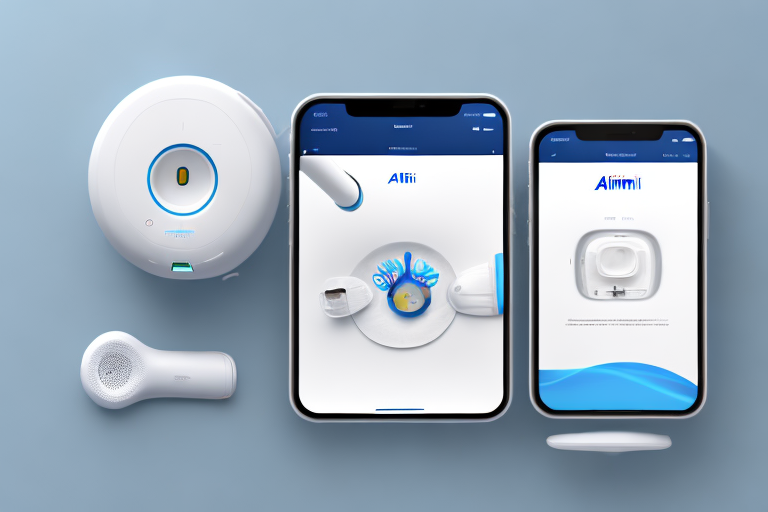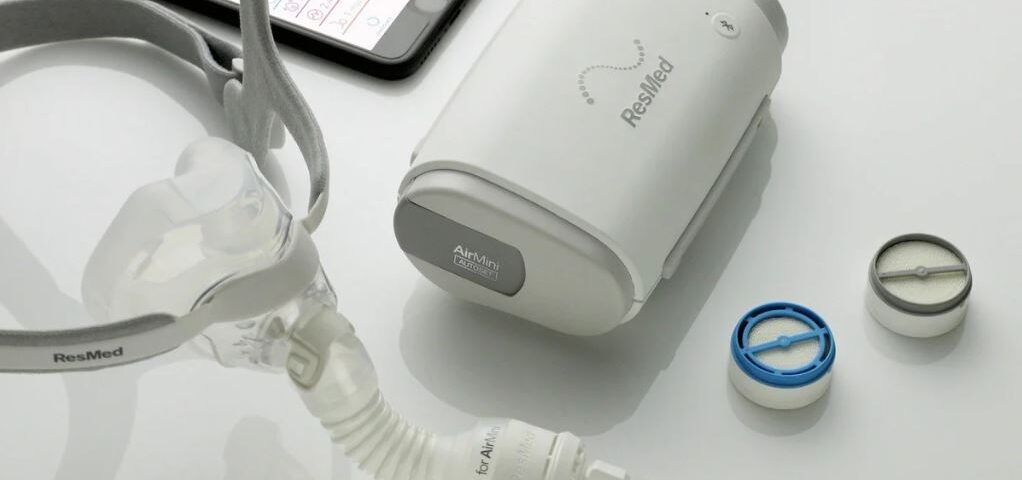Lack of quality sleep can have a detrimental impact on our overall well-being. It can leave us feeling exhausted, irritable, and unable to perform at our best. One common condition that disrupts sleep is sleep apnea, a silent nighttime threat that affects millions of people worldwide.
Understanding Sleep Apnea: The Silent Nighttime Threat
Sleep apnea is a sleep disorder characterized by pauses in breathing or shallow breathing during sleep. These pauses can last for a few seconds to minutes and can occur multiple times throughout the night.
There is sleep test to check which type of sleep apnea you have: obstructive sleep apnea, central sleep apnea, and complex sleep apnea syndrome.
Obstructive sleep apnea is the most common type and occurs when the muscles in the throat fail to keep the airway open. This can happen due to various factors such as obesity, enlarged tonsils, or a narrow airway. When the airway becomes blocked, it leads to pauses in breathing, causing a drop in oxygen levels in the blood. The brain then signals the body to wake up briefly to reopen the airway, resulting in disrupted sleep patterns.
Central sleep apnea is less common and happens when the brain fails to transmit proper signals to the muscles controlling breathing. Unlike obstructive sleep apnea, there is no physical blockage in the airway. Instead, the brain fails to send the necessary signals, causing a temporary cessation of breathing. This type of sleep apnea is often associated with underlying medical conditions such as heart failure, stroke, or brainstem injury. Click here to learn how CPAP machines transform sleep quality.

Complex sleep apnea syndrome is a combination of both obstructive and central sleep apnea. It occurs when someone with obstructive sleep apnea develops central sleep apnea after receiving treatment with continuous positive airway pressure (CPAP) therapy. This condition requires specialized treatment approaches to address both types of apnea.
Symptoms and Risks of Sleep Apnea
Common symptoms of sleep apnea include loud snoring, gasping for air during sleep, morning headaches, excessive daytime sleepiness, and difficulty concentrating. These symptoms often go unnoticed by the person experiencing them and are more commonly reported by their sleep partners or family members. If left untreated, sleep apnea can increase the risk of high blood pressure, heart disease, stroke, and diabetes.
When the airway repeatedly becomes blocked or breathing is interrupted during sleep, it puts a significant strain on the body. The frequent awakenings prevent the person from entering deep, restorative sleep, leading to daytime fatigue and impaired cognitive function. The lack of oxygen during apnea episodes can also have detrimental effects on various organs and systems in the body. For example, the heart has to work harder to compensate for the decreased oxygen levels, which can lead to high blood pressure and an increased risk of heart disease. Additionally, the disrupted sleep patterns can disrupt the body’s regulation of glucose metabolism, potentially contributing to the development of diabetes.
The Connection Between Sleep Apnea and Overall Health
Sleep apnea not only affects the quality of sleep but also has an impact on overall health. The repeated disruption of breathing during sleep can lead to oxygen deprivation, causing stress on the body. This can result in daytime fatigue, impaired cognitive function, and decreased quality of life.
Furthermore, sleep apnea has been linked to various other health conditions. For instance, individuals with sleep apnea are more likely to have a higher body mass index (BMI) and be overweight or obese. This association is believed to be due to the excess weight putting pressure on the airway, making it more prone to collapse during sleep. Sleep apnea has also been associated with an increased risk of developing mood disorders such as depression and anxiety. The chronic sleep deprivation and oxygen deprivation associated with sleep apnea can disrupt the balance of neurotransmitters in the brain, contributing to these mental health conditions.
Moreover, sleep apnea has implications for respiratory health. The repeated episodes of interrupted breathing can lead to inflammation in the airways and increased susceptibility to respiratory infections. Individuals with sleep apnea may also experience worsened asthma symptoms or have a higher risk of developing chronic obstructive pulmonary disease (COPD).
In conclusion, sleep apnea is a complex sleep disorder that can have far-reaching effects on overall health. It is important to recognize the symptoms and seek appropriate medical evaluation and treatment. By addressing sleep apnea, individuals can improve their sleep quality, reduce the risk of associated health conditions, and enhance their overall well-being.
The Science Behind CPAP Machines
To combat the effects of sleep apnea and improve sleep quality, Continuous Positive Airway Pressure (CPAP) machines have emerged as a highly effective treatment option.
Sleep apnea is a common sleep disorder characterized by repeated pauses in breathing during sleep. These pauses, known as apneas, can last for a few seconds to a few minutes and can occur multiple times throughout the night. This disruption in breathing can lead to fragmented sleep, daytime fatigue, and other health issues.
A CPAP machine works by delivering a constant flow of pressurized air to keep the airway open during sleep. This pressurized air acts as a splint, preventing the collapse of the airway and allowing for uninterrupted breathing.
How Does a CPAP Machine Work?
A CPAP machine consists of several components that work together to provide effective treatment for sleep apnea. The main components include:
- Mask: The mask is designed to fit over the nose and/or mouth and is secured in place with straps. It ensures a proper seal to prevent air leakage.
- Tubing: The tubing connects the mask to the CPAP machine and allows for the delivery of pressurized air.
- Motor: The motor generates the required air pressure and ensures a continuous flow of pressurized air throughout the night.
When a person with sleep apnea wears a CPAP mask and turns on the machine, the pressurized air is delivered through the tubing and into the airway. This constant flow of air keeps the airway open, preventing the collapse that occurs during apneas.
By providing a steady stream of pressurized air, a CPAP machine effectively reduces or eliminates the breathing pauses and snoring associated with sleep apnea. This allows individuals to breathe normally and enjoy a restful night’s sleep.

The Role of CPAP in Treating Sleep Apnea
CPAP therapy is considered the gold standard for treating sleep apnea. It is highly effective in managing the symptoms of sleep apnea and improving overall sleep quality.
By keeping the airway open, CPAP therapy allows for uninterrupted breathing and restful sleep. This can lead to a significant reduction in daytime fatigue, improved cognitive function, and enhanced quality of life.
In addition to improving sleep quality, CPAP therapy also has several other benefits. The positive air pressure delivered by the CPAP machine helps to improve oxygen levels in the blood, reducing the strain on the heart. This can be particularly beneficial for individuals with underlying cardiovascular conditions.
Furthermore, CPAP therapy has been shown to decrease the risk of other health complications associated with untreated sleep apnea, such as high blood pressure, stroke, and diabetes.
Different Types of CPAP Machines
There are various types of CPAP machines available to cater to individual needs. These machines offer different features and functionalities to enhance comfort and improve treatment outcomes.
Some CPAP machines come with advanced features, such as auto-adjusting pressure settings. These machines can automatically adjust the air pressure based on the individual’s breathing patterns, ensuring optimal therapy throughout the night.
Another common feature found in CPAP machines is a heated humidifier. This helps to reduce dryness and irritation in the airway, making CPAP therapy more comfortable and tolerable.
Additionally, there are different types of masks available, including nasal masks, full-face masks, and nasal pillows. These masks are designed to provide a secure and comfortable fit, minimizing air leakage and maximizing therapy effectiveness.
It is essential to consult with a sleep specialist or healthcare professional to determine the most suitable CPAP machine and mask for your specific sleep apnea needs. They can assess your individual requirements and guide you in selecting the right equipment to optimize your treatment outcomes.
The Benefits of Using CPAP Machines for Sleep Apnea
The benefits of using CPAP machines extend beyond treating sleep apnea. Let’s explore some of the advantages:
Improved Sleep Quality
One of the primary benefits of CPAP therapy is its ability to improve sleep quality. By ensuring uninterrupted breathing throughout the night, CPAP machines help individuals attain a deeper, more restorative sleep. This can lead to increased energy levels, improved mood, and enhanced overall well-being.
Enhanced Daytime Alertness and Energy
CPAP therapy can significantly reduce daytime sleepiness, which is a common symptom of sleep apnea. By promoting better sleep, individuals using CPAP machines often experience increased alertness, concentration, and productivity during the day.
Long-Term Health Benefits
Consistent use of CPAP machines can have long-term health benefits. By effectively treating sleep apnea, it helps to reduce the risk of associated health conditions, such as cardiovascular disease and diabetes. Additionally, improved sleep quality can strengthen the immune system and promote overall physical and mental well-being.

Overcoming Challenges with CPAP Machines
Common Concerns and Misconceptions
While CPAP therapy has proven to be highly effective, some individuals may have concerns or misconceptions about using CPAP machines. Understanding and addressing these concerns can help individuals overcome any hesitations they may have.
Common concerns include discomfort or claustrophobia caused by the mask, noise from the machine, and difficulty adjusting to sleeping with the CPAP setup.
Tips for Adjusting to a CPAP Machine
Like any new habit, using a CPAP machine may take time to adjust. Here are some tips to help ease the transition:
- Start by using the CPAP machine during daytime naps or for short periods while relaxing to gradually become accustomed to the sensation.
- Ensure the mask fits properly and is comfortable. Experiment with different mask styles and sizes, and consult with a healthcare professional if necessary.
- Practice good sleep hygiene, such as maintaining a consistent sleep schedule, creating a relaxing bedtime routine, and avoiding stimulants like caffeine or electronics before bed.
- Patience is key. It may take time for the body to adjust to the new sleep environment created by the CPAP machine.
Maintaining Your CPAP Machine for Optimal Performance
To ensure the CPAP machine functions optimally and provides the desired benefits, regular maintenance is necessary. Here are some essential maintenance tips:
- Clean the mask, tubing, and humidifier chamber regularly using mild, fragrance-free soap and warm water.
- Replace disposable filters as recommended by the manufacturer.
- Replace mask cushions or nasal pillows if they become worn or damaged.
- Check for air leaks in the mask or tubing and address them promptly.
Consult the user manual provided with the CPAP machine for specific maintenance instructions and recommendations.
Conclusion
Sleep apnea can have a significant impact on sleep quality and overall health. CPAP machines offer a powerful solution for individuals with sleep apnea, ensuring uninterrupted breathing and restful sleep. By understanding the science behind CPAP machines, appreciating their benefits, and addressing concerns, individuals can embrace this technology and elevate their rest for better sleep and improved well-being.
